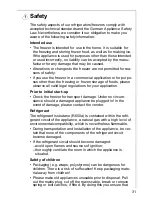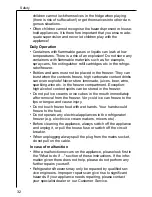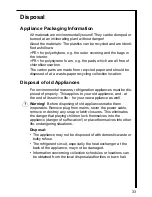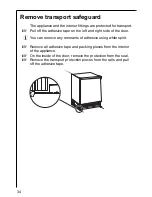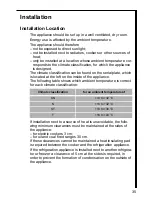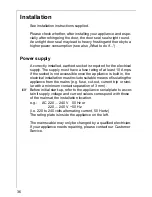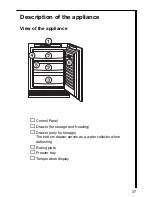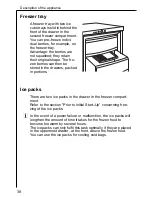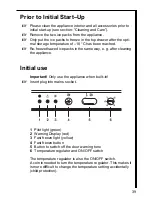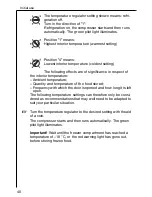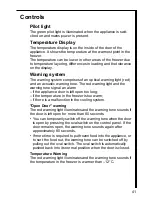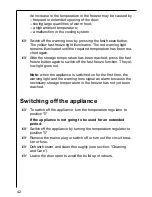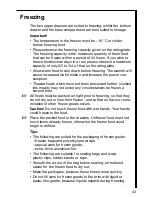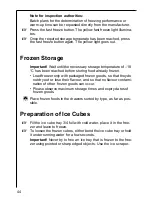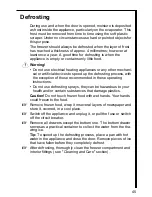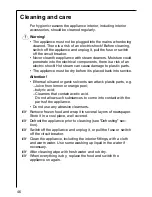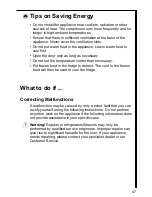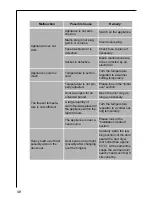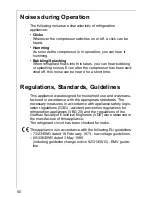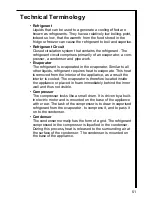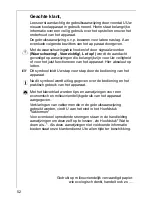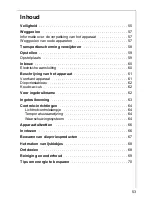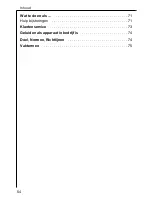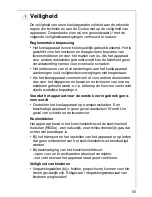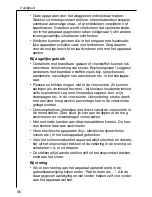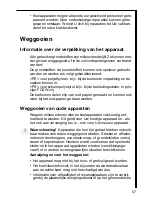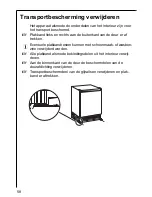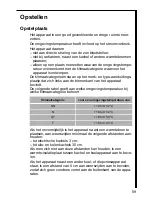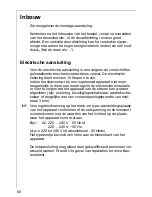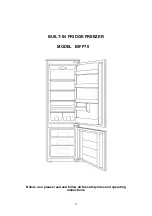
45
Defrosting
During use and when the door is opened, moisture is deposited
as frost inside the appliance, particularly on the evaporator. This
frost must be removed from time to time using the soft plastic
scraper. Under no circumstances use hard or pointed objects for
this purpose.
The freezer should always be defrosted when the layer of frost
has reached a thickness of approx. 4 millimetres; however at
least once a year. A good time for defrosting is when the
appliance is empty or contains only little food.
1
Warning!
• Do not use electrical heating appliances or any other mechani-
cal or artificial devices to speed up the defrosting process, with
the exception of those recommended in these operating
instructions.
• Do not use defrosting sprays, they can be hazardous to your
health and/or contain substances that damage plastics.
Caution!
Do not touch frozen food with wet hands. Your hands
could freeze to the food.
0
Remove frozen food, wrap it in several layers of newspaper and
store it, covered, in a cool place.
0
Switch off the appliance and unplug it, or pull the fuse or switch
off the circuit breaker.
0
Remove all drawers except the bottom one. The bottom drawer
serves as a practical container to collect the water from the tha-
wing ice.
Tip:
To speed up the defrosting process, place a pan with hot
water in the appliance and close the door. Remove pieces of ice
that have fallen before they completely defrost.
0
After defrosting, thoroughly clean the freezer compartment and
interior fittings ( see "Cleaning and Care" section).

